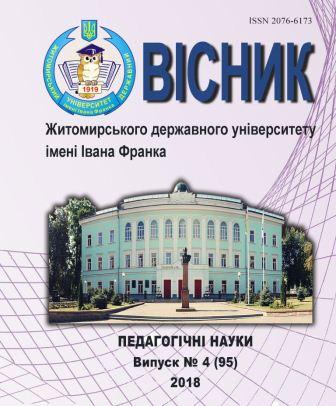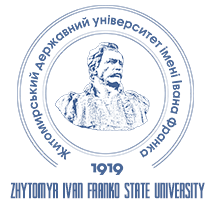The Digital Generation of Children and Adolescents in Face of Internet Dangers
DOI:
https://doi.org/10.35433/pedagogy.4(95).2018.5-11Keywords:
the Internet, digital generation, online identity, cyber violence, Internet pornography, Internet hateAbstract
The dynamic development of digital media and the tools which create the world of new technologies influence their users' social and cultural transformations on a global scale. Undoubtedly, cyberspace enriches educational, upbringing and socializing opportunities of digital natives, that is children and adolescents who have grown up in the media space. The apparent usefulness of the Internet should not, however, lull parents' and teachers' vigilance, as it is potentially a highly dangerous tool due to its telepresence and the fact that young people are immersed in it. The aim of the article is to analyze online identity of the digital generation, that is young people who have grown up in a completely new reality, different from any other in the past, and who describe themselves as 'always connected'. Since in the postmodern world (also in cyberspace) constructing one's identity is an individual's task, it seems justified to outline selected Internet dangers, such as cyber violence, Internet pornography and Internet hate. In order to facilitate young people's healthy development, the article lists a handful of preventive measures to be introduced in basic rearing environments that is family and school.References
Barlińska J. Cyberprzemoc. O zagrożeniach i szansach na ograniczenie zjawiska wśród adolescentów / J. Barlińska, A. Szuster. – Wydawnictwo Uniwersytetu Warszawskiego ; Warszawa, 2015.
Barney D. Społeczeństwo sieci / D. Barney ; transl. M. Fronia. – Wydawnictwo Sic ; Warszawa 2008.
Bauerlein M. The Dumbest Generation : How the Digital Age Stupefies Young Americans and Jeopardizes Our Future / M. Bauerlein. – Penguin Tarcher, New York, 2008.
Czerska I. Pokolenie head down jako konsekwencja smartfonizacji społeczeństwa / I. Czerska // ''Prace Naukowe Uniwersytetu Ekonomicznego we Wrocławiu'', 2016. – No. 459. – Pp. 214–221.
Ellul J. The Technological System / J. Ellul. – The Continuum Publishing Corporation. – New York, 1980.
Filar M. Pornografia. Studium z dziedziny polityki kryminalnej / M. Filar. – Wydawnictwo Uniwersytetu Mikołaja Kopernika, Toruń 1977.
Gawrol K. Hejt w internecie – analiza zjawiska / K. Gawrol. – ''Edukacja – Technika – Informatyka'' 18 (2016). – No. 4. – Pp. 304–309.
Global Dignity Wilki i owce w Internecie, czyli raport na temat hejtu wśród młodzieży / Global Dignity. – Access mode : https://businessinsider.com.pl (accessed: 13.11.2018).
Jędrzejko M. Cyfrowi Tubylcy (socjopedagogiczne aspekty nowych technologii cyfrowych) / M. Jędrzejko, D. Morańska. – Oficyna Wydawnicza ASPRA-JR, Dąbrowa Górnicza-Warszawa, 2013.
Juza M. Hejterstwo w komunikacji internetowej: charakterystyka zjawiska, przyczyny i sposoby przeciwdziałania / M. Juza // ''Profilaktyka Społeczna i Resocjalizacja'' (2015). – Nr 25. – Pp. 27–50.
Kowalski R. M. Cyberprzemoc wśród dzieci i młodzieży / R. M. Kowalski, S. P. Limber, Agatson P. W. ; transl. A. Wicher. – Wydawnictwo Uniwersytetu Jagiellońskiego, Kraków 2019.
Livingstone S. Children's use of the internet: reflections on the emerging research agenda / S. Livingstone. – ''New media & Society'' 5 (2003). – No. 2. – Pp. 147–166.
Makaruk K. Kontakt dzieci i młodzieży z pornografią / K. Makaruk, J. Włodarczyk, P. Michalski // Raport z badań. – Fundacja Dajemy Dzieciom Siłę, Warszawa 2017.
Melosik Z. Kultura popularna i tożsamość młodzieży / Z. Melosik // niewoli władzy i wolności. – Oficyna Wydawnicza ''Impuls'', Kraków 2013.
Morańska D. Kilka słów na wstępie/ D. Morańska // Patologie w cyberprzestrzeni. Profilaktyka zagrożeń medialnych ; ed. D. Morańska. – Wydawnictwo Wyższej Szkoły Biznesu, Dąbrowa Górnicza 2015. – Pp. 7–8.
Motyka M. A. Pokolenie smombie: charakterystyka i typologia / M. A. Motyka. – Przestrzeń Społeczna 15 (2018). – No. 1. – Pp. 169–202.
Ogonowska A. Ekranolatki między mediami / A. Ogonowska // Stronę nowej psychologii mediów, Zeszyt Naukowy. – Wyższa Szkoła Zarządzania i Bankowości (2016). – No. 40. – Pp. 1–17.
Olejnik P. Internet – niebezpieczeństwo dezintegracji osobowości dziecka? / P. Olejnik // Dziecko i media elektroniczne – nowy wymiar dzieciństwa. Komputer i Internet w życiu dziecka i obraz jego dzieciństwa ; ed. J. Izdebska, T. Sosnowski. – Vol. 2, Trans Humana, Białystok 2005. – Pp. 125–133.
Prensky M. Digital Natives, Digital Immigrants / M. Prensky. – On the Horizon 9 (2001). – No. 5. – Pp. 1–6.
Pyżalski J. Agresja elektroniczna dzieci i młodzieży – różne wymiary zjawiska / J. Pyżalski. – ''Kwartalnik Dziecko Krzywdzone'' 26 (2009). – No. 1. – Pp. 9–13.
Rębisz S. Świadomość i skala zjawiska cyberprzemocy wśród młodzieży gimnazjalnej województwa podkarpackiego / S. Rębisz, I. Sikora, K. Smoleń-Rębisz. – ''Edukacja – Technika – Informatyka'' 21 (2017). – No. 2. – Pp. 231–238.
Rosińska K. Zjawisko hejtingu wśród młodzieży oraz sposoby przeciwdziałania / K. Rosińska // ''Kultura – Media – Teologia'', 2017. – No. 29. – Pp. 9–23.
Rushkoff D. Playing the Future. How Kid's Culture Can Teach Us to Thrive in an Age of Chaos / D. Rushkoff. – HarperCollins, New York 1996.
Skibińska M. Czy pokolenia cyfrowe potrzebują edukacji informacyjnej? / M. Skibińska // Edukacja a nowe technologie w kulturze, informacji i komunikacji ; ed. D. Siemieniecka. – Wydawnictwo Naukowe Uniwersytetu Mikołaja Kopernika, Toruń 2015. – Pp. 49–67.
Tapscott D. Cyfrowa dorosłość. Jak pokolenie sieci zmienia nasz świat / D. Tapscott ; transl. P. Cypryański. – Wydawnictwo Akademickie i Profesjonalne, Warszawa 2010.
Turkle S. Life on the Screen : Identity in the Age of the Internet / S. Turkle // Simon and Schuster. – New York, 1995.
Wawrzyniak M. Hejtoholik, czyli jak zaszczepić się na hejt, nie wpaść w pułapkę obgadywania oraz nauczyć zarabiać się na tych, którzy Cię oczerniają / M. Wawrzyniak. – Wydawnictwo Onepress, Gliwice 2015.
Wojtasik Ł. Pedofilia i pornografia w Internecie – zagrożenia dla dzieci, ''Dziecko Krzywdzone'' 2 (2003). – No. 1. – Pp. 1–5.
Wrona A. Ciemna strona sieci – zagrożenia internetowe oraz ich konsekwencje dla uczniów, in: Zagrożenia cyberprzestrzeni i świata wirtualnego / A. Wrona; ed. J. Bednarek, A. Andrzejewska, Difin SA. – Warszawa 2014. – Pp. 82–97.
Downloads
Issue
Section
License
Copyright (c) 2019 Barbara Adamczyk

This work is licensed under a Creative Commons Attribution-NonCommercial-NoDerivatives 4.0 International License.
Authors published in this journal agree to the following terms:
a) The authors reserve the right to author their work and grant the journal the right to first publish this work under the Creative Commons Attribution License, which allows others to freely distribute the published work with a mandatory link to the authors of the original work and the first publication of the work therein magazine.
b) Authors have the right to enter into separate additional agreements regarding the non-exclusive distribution of the work in the form in which it was published by this journal (for example, posting work in an electronic repository of the institution or publishing as part of a monograph), provided that the reference to the first publication of the work is maintained therein. magazine.
c) Journal policy permits and encourages the submission of manuscripts by the authors on the Internet (for example, in repositories of institutions or on personal websites), both prior to submitting this manuscript to the editorial board and as it contributes to the emergence of productive scientific discussion, and has a positive impact on the promptness and dynamics of citing a published work (see The Effect of Open Access).


 ISSN
ISSN 





